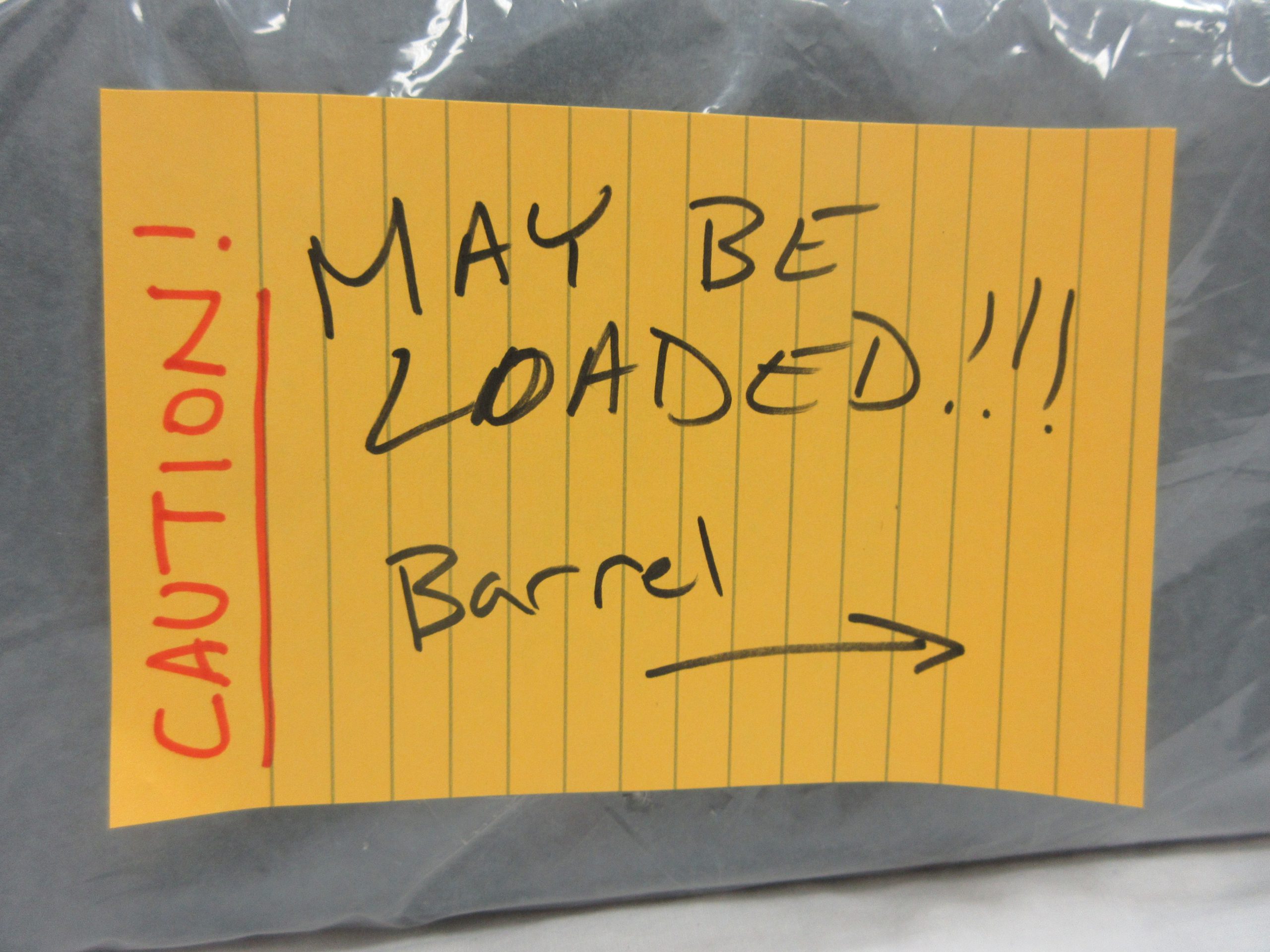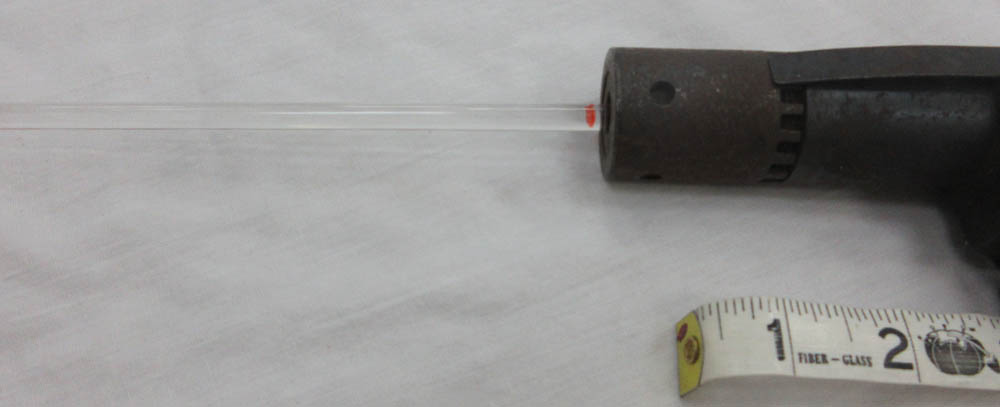
“Caution, May Be Loaded” label on box containing firearm.
Not only do conservators need to protect the objects in their care, they especially need to keep themselves safe. Whether it is working with hazardous materials or handling weapons, safety is of the utmost importance. Recently, an MG15 German machine gun from the state’s collection that had been damaged in a boiler pipe leak in 2010 came to us needing to be cleaned. As with all firearms, before it can be treated, we needed to know if it was loaded. Depending on the type of firearm, there are several ways to check to see if it is loaded. The loaded status of firearms should be noted in collections records, but you should never assume a gun is not loaded. ALWAYS handle a firearm as if it is loaded.
With this machine gun, the record stated that it was unclear if it was loaded. We were not sure the safest way to check. We contacted a curator at the Cody Firearms Museum at the Buffalo Bill Center of the West. He said to pull back the bolt on the right side of the gun and then send down a bore snake or other thin object to see if the barrel was obstructed. If that didn’t work, to carefully place a dowel down the barrel to see if it went all the way down.
The bolt on the side of the machine gun.
As luck would have it, the bolt did not move, so we had to go with the dowel method. The barrel was measured at 21” long and this was marked on the dowel. The dowel was then carefully inserted down the barrel and the muzzle was marked on the dowel.

Measuring the external length of the barrel. Here, it is 21″.

The dowel is inserted into the barrel and the muzzle is marked.

The dowel is removed and the external measurement of the barrel is marked (here in black). The difference between the muzzle mark and the barrel mark shows that the gun is likely not loaded.
The dowel was removed and the difference measured. The dowel had made it down 25.25”. The difference was approximately 82mm, which is the size of the original ordinance for this model of machine gun. Because the dowel could be inserted that far, it was not likely that the machine gun was loaded. To be on the safe side, we will contact the police department to get a final assurance for this and other firearms in the collection of uncertain status.
Safety First! There are a few simple but important guidelines for safely handling firearms:
1) Never point a weapon at yourself or another person. Always point the barrel toward a wall or the floor. NEVER LOOK DOWN THE BARREL OF A FIREARM!
2) Before you begin any handling or cleaning of your firearm, always assume it is loaded. Even if it is marked otherwise, check to make sure that it is not loaded. Breech loading guns can be checked by opening the action (bolt, slide, or lever) and shining a light inside or inserting a bore snake. For muzzle loading guns, the dowel method can be used.
For complete instructions on how to check if a historic firearm is loaded, visit:
https://www.nps.gov/museum/publications/conserveogram/10-01.pdf
Additionally, for flintlock and wheelock firearms, a flashlight can be shone down through the powder hole by the lock. Using a mirror to look down the barrel, if you can see the light through the powder hole, the firearm is not loaded.
Using a mirror to indirectly look down the barrel, the light shining through the powder hole is visible indicating that the pistol is not loaded.
3) If you are working on a “retired” firearm, even after you determine it is not loaded, it is best not to pull the trigger. There may be extensive corrosion to interior parts and pulling the trigger may result in damage to the internal mechanism.
4) Always support the firearm with two hands to prevent dropping or putting undue stress on weak points.
Our guide to caring for historic firearms can be found here: https://history.nebraska.gov/sites/history.nebraska.gov/files/doc/Caring%20for%20Historic%20Firearms%202.pdf
If you are ever unsure if your firearm is not loaded and are unable to check for yourself or are concerned about your safety, don’t hesitate to contact your local law enforcement (at a non-emergency number) for advice. Your safety is of the utmost importance!



